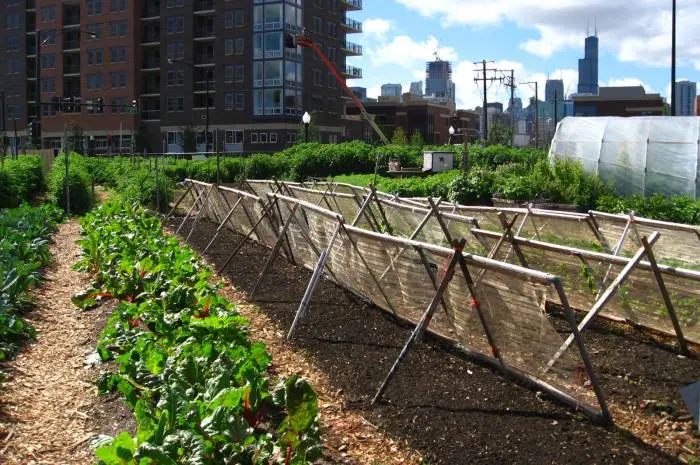Developing an urban agriculture business on limited land presents a unique opportunity to contribute to sustainable food production, address urban food insecurity, and promote environmental stewardship. Despite space constraints in urban areas, innovative farming techniques, vertical gardening, and hydroponic systems enable entrepreneurs to cultivate fresh produce efficiently and economically. Here’s a comprehensive guide to establishing a successful urban agriculture business on limited land:
1. Conduct Market Research and Feasibility Analysis
Assess Local Demand
Identify the demand for locally grown produce in your target market, including restaurants, farmers’ markets, grocery stores, and community-supported agriculture (CSA) programs. Analyze consumer preferences, pricing trends, and competition to gauge market opportunities.
Evaluate Site Suitability
Evaluate the available land or space for urban agriculture, considering factors such as sunlight exposure, soil quality, access to water, zoning regulations, and proximity to markets or distribution channels.
Also Read
2. Choose Suitable Farming Techniques and Technologies
Opt for Vertical Farming
Maximize space efficiency by utilizing vertical farming techniques such as vertical towers, hydroponic systems, and aeroponics. Vertical farming minimizes land footprint while maximizing yield per square foot.
Explore Hydroponics and Aquaponics
Implement hydroponic or aquaponic systems that allow plants to grow in nutrient-rich water solutions without soil. These soilless farming methods conserve water, reduce resource inputs, and accelerate plant growth.
3. Select Profitable Crops and Specialize
Choose High-Value Crops
Focus on cultivating high-value, specialty crops that command premium prices in the market, such as microgreens, culinary herbs, exotic vegetables, edible flowers, and heirloom varieties. Consider local culinary trends, seasonal demand, and niche markets when selecting crops.
Consider Value-Added Products
Explore opportunities to diversify your product offerings by processing and packaging value-added products such as gourmet salads, infused oils, herbal teas, or artisanal condiments. Value-added products can enhance profitability and appeal to discerning consumers.
4. Embrace Sustainable Practices and Environmental Stewardship
Implement Organic Farming Methods
Prioritize organic and sustainable farming practices to minimize environmental impact, conserve natural resources, and promote soil health. Avoid synthetic pesticides, fertilizers, and GMOs, and focus on soil regeneration, crop rotation, and composting.
Promote Biodiversity
Create habitat corridors, pollinator-friendly gardens, and green spaces to support local biodiversity and ecosystem services. Incorporate native plants, beneficial insects, and natural pest control methods to maintain ecological balance and resilience.
5. Establish Partnerships and Distribution Channels
Collaborate with Local Businesses
Forge partnerships with restaurants, chefs, retailers, caterers, and food cooperatives to supply fresh, locally grown produce. Build relationships with chefs and culinary professionals who prioritize sourcing ingredients from local farmers.
Participate in Farmers’ Markets
Participate in farmers’ markets, pop-up markets, and community events to showcase your products and engage directly with customers. Farmers’ markets provide an opportunity to build brand awareness, receive feedback, and test new products.
6. Leverage Technology and Data Analytics
Utilize Farm Management Software
Invest in farm management software or agricultural apps to streamline operations, track inventory, monitor crop health, and analyze performance metrics. Data-driven insights can optimize resource allocation, crop planning, and decision-making.
Implement IoT Sensors
Deploy IoT (Internet of Things) sensors and smart monitoring systems to collect real-time data on environmental conditions, moisture levels, temperature, and nutrient levels. IoT technology enables precision farming and remote monitoring of crop health.
7. Educate and Engage the Community
Offer Educational Programs
Host workshops, seminars, and farm tours to educate the community about urban agriculture, sustainable farming practices, and healthy eating. Empower consumers to make informed choices and support local food systems.
Engage in Community Outreach
Collaborate with schools, universities, youth groups, and community organizations to promote food literacy, urban gardening, and environmental education. Engage volunteers, interns, and volunteers to participate in farm activities and community projects.
8. Secure Funding and Financial Resources
Explore Grant Opportunities
Research grant programs, government incentives, and funding opportunities available for urban agriculture initiatives, sustainable farming projects, and food security initiatives. Seek grants from local government agencies, foundations, and philanthropic organizations.
Consider Crowdfunding Campaigns
Launch crowdfunding campaigns on platforms such as Kickstarter, Indiegogo, or GoFundMe to raise capital for startup costs, infrastructure investments, and expansion projects. Leverage social media, email marketing, and community outreach to promote your campaign.
By following these strategies and best practices, aspiring urban farmers can establish a successful and sustainable agriculture business on limited land, contribute to local food security, promote environmental stewardship, and cultivate a thriving community of growers and consumers. Embrace innovation, collaboration, and resilience to overcome challenges and realize the full potential of urban agriculture in the modern urban landscape.
















